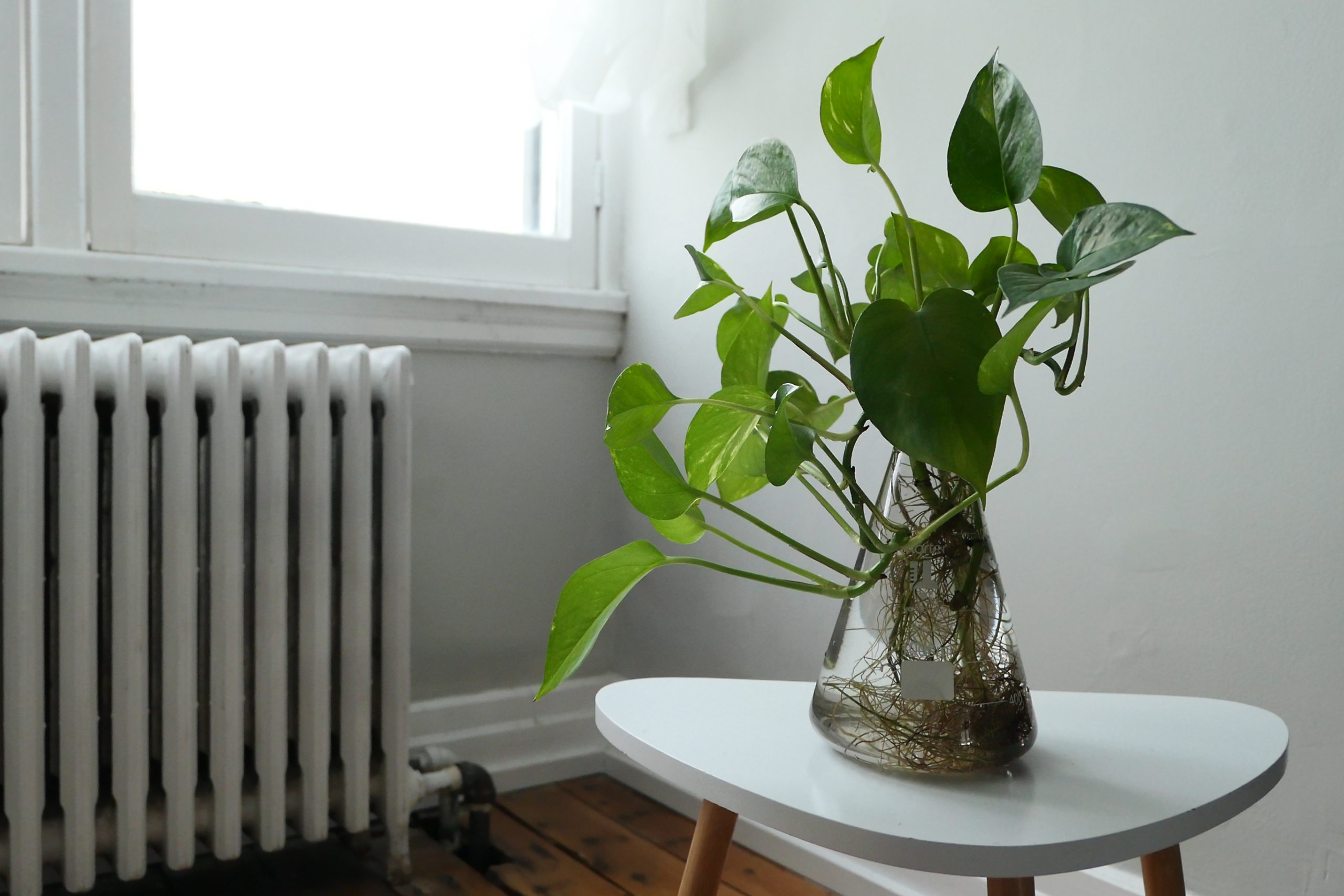Pothos are one of the most popular houseplants. They are resilient, fast growers, and produce attractive foliage with little maintenance. Like many plants, it’s possible to grow pothos in water instead of soil. Many indoor gardeners struggle with watering their houseplants properly, growing in water eliminates that problem.
Water – Not Just For Propagating!
When we think of growing pothos in water, we think of taking cuttings to make more plants. Taking cuttings, or propagating these plants is easy and doesn’t take much time. The cuttings are placed in water and once they start to root, are moved into soil to continue growing long-term. But, they can also simply be left in the water! Keeping a few things in mind, those cuttings will be more than happy to stay submerged forever.
Why Grow Pothos in Water?
Growing in water can be useful if you have concerns about soil creating a mess, or if you have concerns about allergies. If you’re dealing with pets or kids having less dirt around is a big plus. A pothos can be a good choice in places like an office where regular watering can be difficult to maintain. Using water gives you many more container options, and the “see-through” look creates a unique design look in your home.
Don’t Plants Need Soil to Grow?
For plants to grow, conventional wisdom says they need sun, water and nutrients. While we usually think of plants getting nutrients from soil, many of them can also get them from water. Pothos, with its hardy personality, is able to extract the necessary food from the water – but you will have to fertilize it. You can do this by either diluting regular fertilizer or using a few drops of liquid fertilizer in the water. This is similar to hydroponic set-ups that commercial farmers use to produce vegetables in hyper-optimized conditions.
Can I Move my Pothos From Soil to Water?
A pothos grown and established in soil will have a different type of root structure than one grown in water. If you uproot your pothos and place the soil roots in water they will likely drown and rot. If you want to transition your plant to water it’s a good idea to take cuttings instead. This will allow the plant to grow roots that will thrive in water.
In the case of a plant that has suffered and must be moved – remove all damaged and affected roots and re-root in water.
Can I Move My Pothos From Water to Soil?
Similarly, a pothos that has been rooted heavily in water will struggle in soil. The roots won’t be developed properly to take in water and nutrients. Pothos propagated in water and then moved to soil while roots are developing can usually cope with this, but you can help the process along by creating a high-humidity environment. That said, pothos is a very hearty plant and in some cases can handle the transition with only temporary effects.
How to Grow Pothos in Water
You’ll need a water-proof container that is sturdy enough to last for months or years without breaking down. A container made of glass is a great choice because it’s less likely that contaminants will leech into the water. Metal can rust, and some plastics can break down over time. It’s a good idea to sterilize your container before rooting.
It can be fun to use a clear container so that you can watch the roots develop, but water and sun can create conditions for algae to grow. If you’re using a clear container like a mason jar – keep an eye out for green growth.
Once you have your container ready simply add water. If you have hard or heavily chlorinated tap water, avoid using it if possible. Distilled water, filtered water, or bottled water make good alternatives.
It’s easiest to add pothos cuttings to the water and place them in indirect bright sunlight. Once roots have developed, you can add a diluted amount of fertilizer to give your plant the nutrients it needs. Avoid fertilizing too much or too early so you don’t “burn” the plant.
Maintenance for Pothos in Water
Keeping your pothos happy in it’s home is slightly different when it’s in water. Sitting water is slowly losing oxygen, nutrients will deplete as the plant uses them and water will naturally evaporate. Top up the water to keep the roots submerged when the water gets low. Change out the water completely if it becomes cloudy or discoloured. Remember to add dissolved or liquid plant fertilizer during the growing season to keep your plant well-fed and happy.
